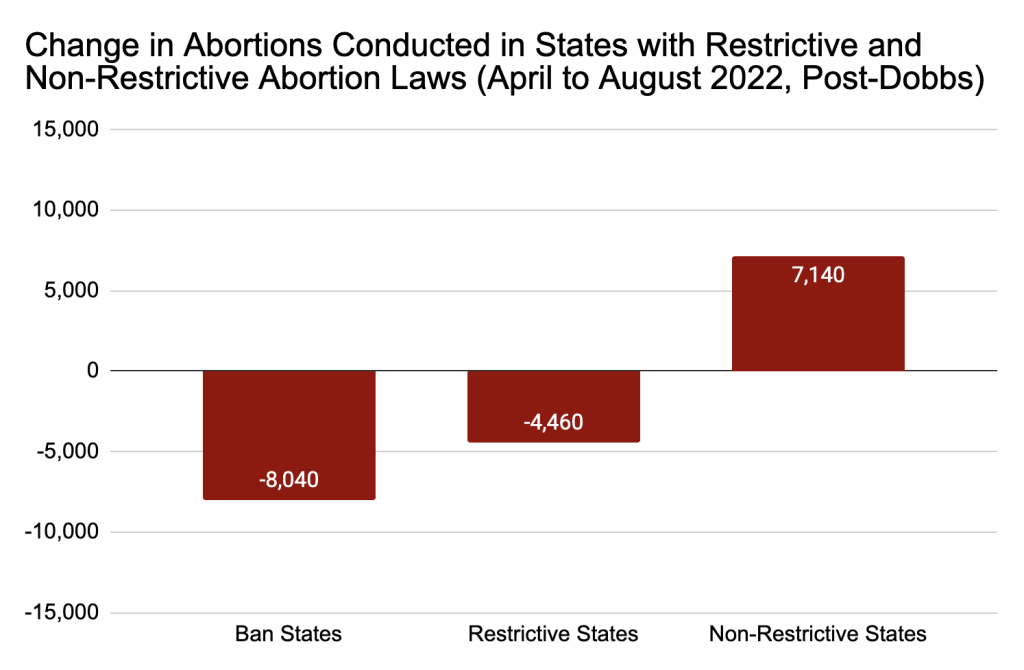Last month, I wrote a piece summarizing data from the Society for Family Planning about the impact of the abortion restrictions implemented after the Dobbs Supreme Court case. In short, abortions conducted through formal providers declined by about 12,500 per month in restrictive states and increased by 7,140 in non-restrictive states, which indicates that many people are traveling for abortion. This amounts to a net reduction of 5,360 abortions, which is 6 percent of all abortions.

In that piece, I noted that this number represents the upper bound of how many abortions were actually reduced by these restrictions because they only count abortions conducted through formal in-state providers and therefore ignore the number of abortions now being conducted informally, primarily through the use of abortion medication like Mifepristone and Misoprostol.
Since I published that piece, I have been on the lookout for efforts to quantify how many informal abortions are actually occurring. This could help tell us how many of these 5,360 missing abortions are actually occurring even though they are not being picked up in counts from formal abortion providers. These abortions will be hard to track for the obvious reason that they need to be done covertly in order to avoid potential legal sanction in most cases.
Nonetheless, I have found some numbers.
From the New York Times, we learn about Aid Access, an organization that prescribes abortion pills telemedically to women in states with bans:
After Dobbs, queries to Aid Access tripled to about 3,600 a month from about 1,200, roughly two-thirds of them from women in states with abortion bans.
If we take two-thirds of the 2,400 difference between 3,600 and 1,200, that gets us 1,600.
From the Washington Post, we learn that:
Las Libres, one of several Mexican groups at the center of the network, says its organization alone is on track to help terminate approximately 20,000 pregnancies this year in the United States.
This figure is slightly less helpful because, unlike the Aid Access figure, it does not give us a good sense of how many of these 20,000 abortions are extra abortions that are attributable to post-Dobbs abortion restrictions. But if we divide 20,000 by 12 months, that gets us 1,667.
Combining the Aid Access number with the Las Libres number gets us 3,267 monthly abortions from just these two organizations. This is 60 percent of the 5,360 reduction in abortions conducted by formal providers. So based on these two numbers alone, abortions have probably declined by around 2.5 percent, not 6 percent.
But of course, these aren’t the only ways to get abortion pills and other less quantified anecdotes about surging use of such pills abounds. From National Public Radio, we have this report about pharmacies just across the Mexican border:
Pharmacies in Nuevo Progreso have noticed a sharp increase in a certain clientele.
“You should see how many girls come and try to get an abortion,” says Walter Garza, a counter clerk at Garcia’s Pharmacy. “A lot. Like crazy.”
Indeed, the availability of these pills is causing such problems for states trying to reduce abortions that conservative organizations are now trying to find ways to crack down on their distribution. Based on what we’ve seen with other efforts to crack down on the distribution of illicit drugs, this will probably be very hard to do.